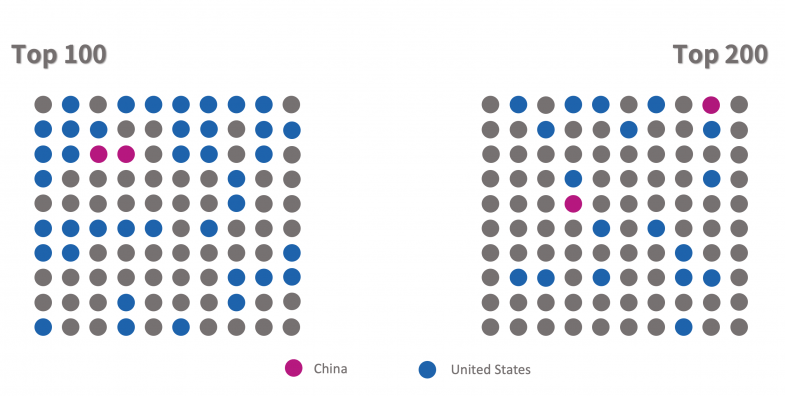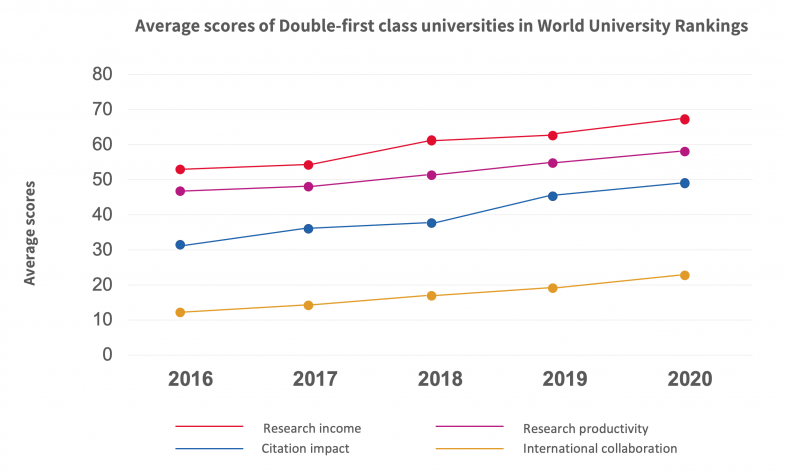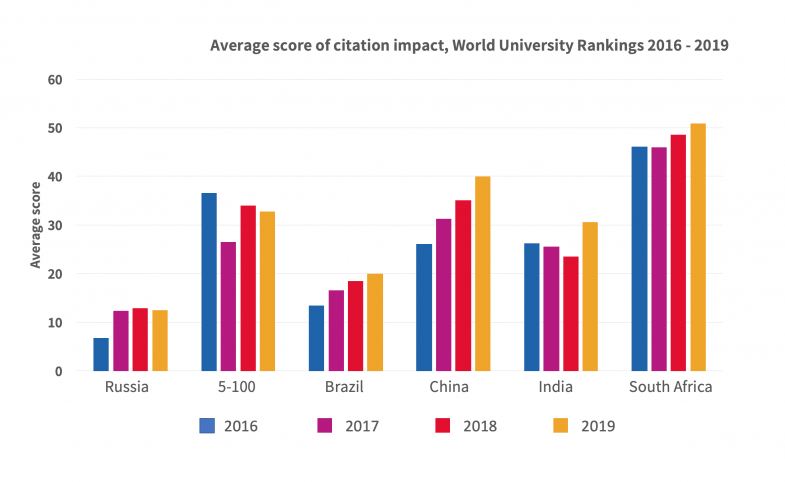Mainland China’s meteoric rise in research and higher education over the last 20 years has been well documented, and has led to two of its institutions becoming household names on the world stage: Tsinghua University and Peking University.
But apart from these esteemed institutions, there is still just one other university in the top 100 of the Times Higher Education World University Rankings – the University of Science and Technology China – with four more in the rest of the top 200.
Compare this with the US, which has 40 in the top 100 and 60 in the top 200, or even a small nation like the Netherlands (7 in the top 100, 11 in the top 200), and it shows the journey that China still needs to make to be on a par with other higher education systems across the globe.

However, there are other ways in which China is leading the way.
One of these is in subject-level assessment, which enables a granular view of performance that is notable in its level of detail. China’s approach is one that particularly interests THE, as a data business that provides global benchmarking for university leaders, as we develop a more granular approach ourselves to quantifying and understanding academic excellence.
In terms of the overall performance, relative to global competitors, a major factor in China’s upwards trajectory since 2015 has been the country’s Double First Class initiative, which named 42 universities as eligible for extra support to boost their world-class credentials.
So, based on THE’s own data on these institutions, how much of a gap is there for the universities participating in this project to bridge, and what has the progress been so far?
An analysis of data for Double First Class universities that have appeared in each of the last five iterations of the THE World University Rankings shows that they have made steady progress over that time in four key areas: research income, research productivity, the citation impact of scholarly papers and international research collaboration.
Although such an upward trajectory is also noticeable for China as a whole in the rankings, especially when it comes to citation impact, the Double First Class institutions have in particular improved more quickly in terms of the number of papers per staff, as shown by this chart showing the change in scores for all institutions in China.

This suggests that they are not only producing research of a higher quality but more of it too.
Comparing this trend with average metric scores for other countries underlines this progress. For instance, although US universities have seen an improvement in their average score for collaboration, the other metrics have been more constant. It is a similar story for the UK.
However, these charts also demonstrate the gap that even Double First Class universities still need to bridge with some of the top performing research institutions around the globe.
In the UK, average scores for international research collaboration are just under 80, while productivity and citation impact score in the mid 60s. Citation impact in the US is even stronger on average, maintaining a score of above 70.
However, the key metric that suggests this could change in the not-too-distant future is the income measure.
Double First Class universities in China average scored almost 70 for research income per academic, a gap of more than 15 points on the US and not far from double the average score for the UK (although the country has pledged to massively boost research investment in the coming years).
There is a good chance that it is this major investment that is arguably driving the scores in the other metrics upwards and could mean more Double First Class universities break into the top 200 of the World University Rankings in the next few years.
An additional boost for the project comes from comparing the trends shown by its universities and other excellence initiatives around the world.
One emerging country that also has a very targeted programme focussed on a relatively small number of institutions is Russia and its 5-100 Academic Excellence Project.
As the following graph - showing the average citation impact scores from 2016 to 2019 for 5-100 universities compared with various nations (including Russia as a whole) – shows, it is not always a given that there will be immediate improvements in the research impact of institutions sponsored in this way.

Up to 2019, the average citation impact scores for 5-100 universities were yet to show any significant rise, while China (shown here as all institutions but this will mostly be Double First Class universities) leaped ahead and other emerging nations such as Brazil were climbing despite not having any flagship initiative.
In Russia, there may be various complex reason for this, not least that the programme is still in its early days; that the Russian higher education system was not necessarily geared towards universities conducting research; and that some other goals of the project – including greater internationalisation – appear to be bearing more fruit.
Chinese universities too may be benefitting from many other factors besides the targeted investment of Double First Class (whose influence, it should be explained, also extends beyond the 42 universities through an additional subject-level focus on around 100 other institutions).
These include the successful way research in the country has connected to global science’s collaboration network, including publishing regularly in English and the critical mass it has achieved in research and innovation more generally.
However, the data here suggest that not all excellence initiatives are made equal, whether that is due to funding, programme design or political will.
Register to continue
Why register?
- Registration is free and only takes a moment
- Once registered, you can read 3 articles a month
- Sign up for our newsletter
Subscribe
Or subscribe for unlimited access to:
- Unlimited access to news, views, insights & reviews
- Digital editions
- Digital access to THE’s university and college rankings analysis
Already registered or a current subscriber?


